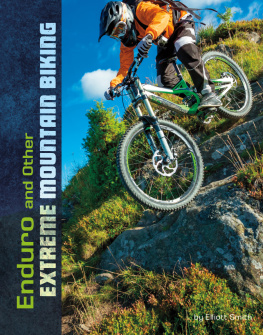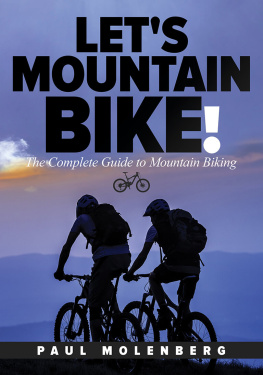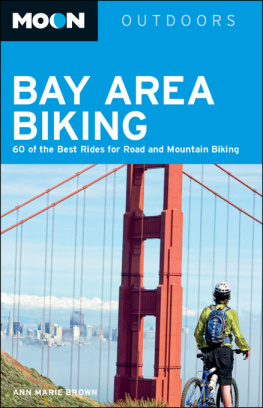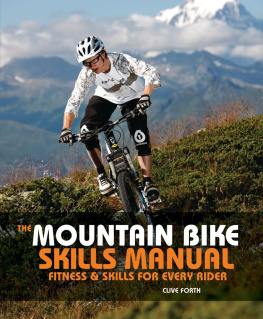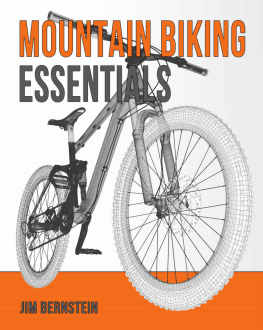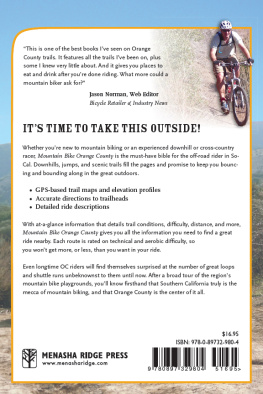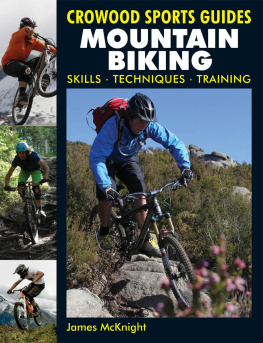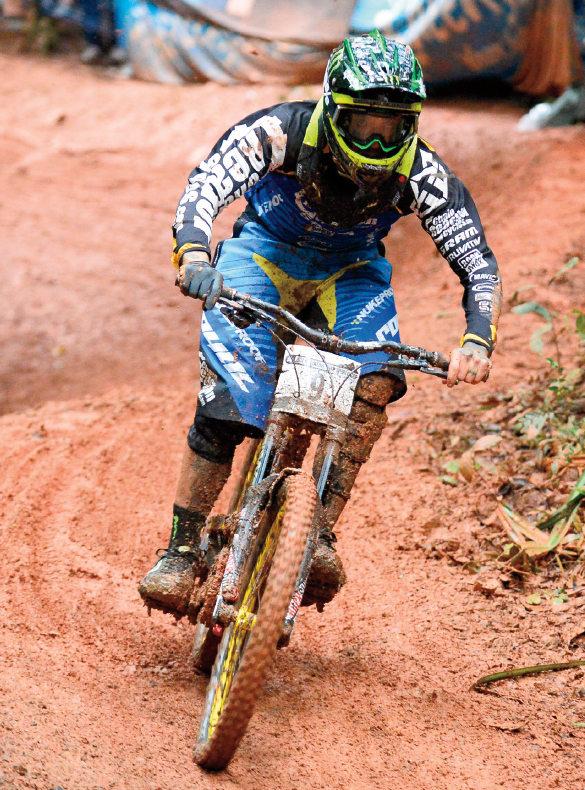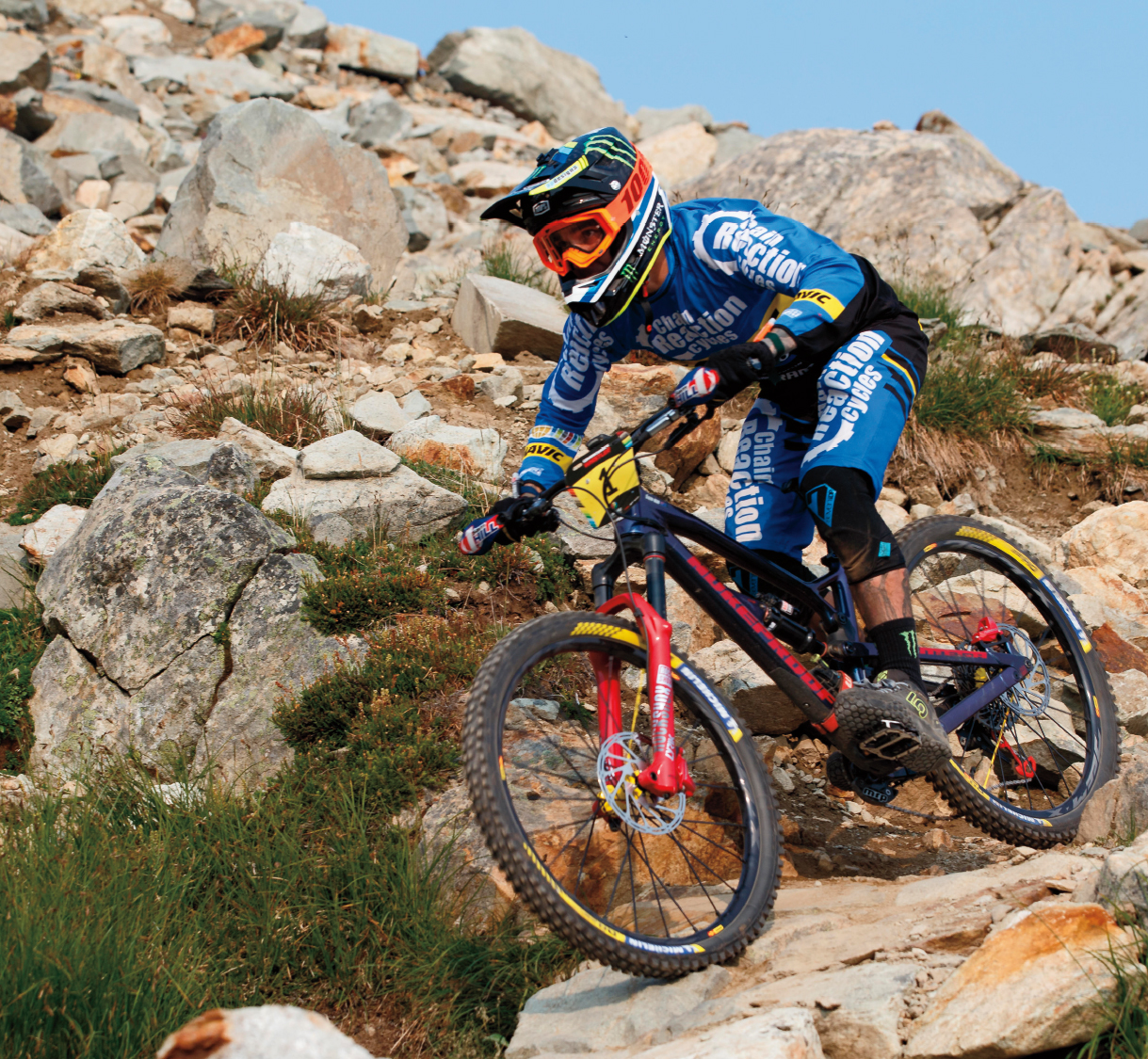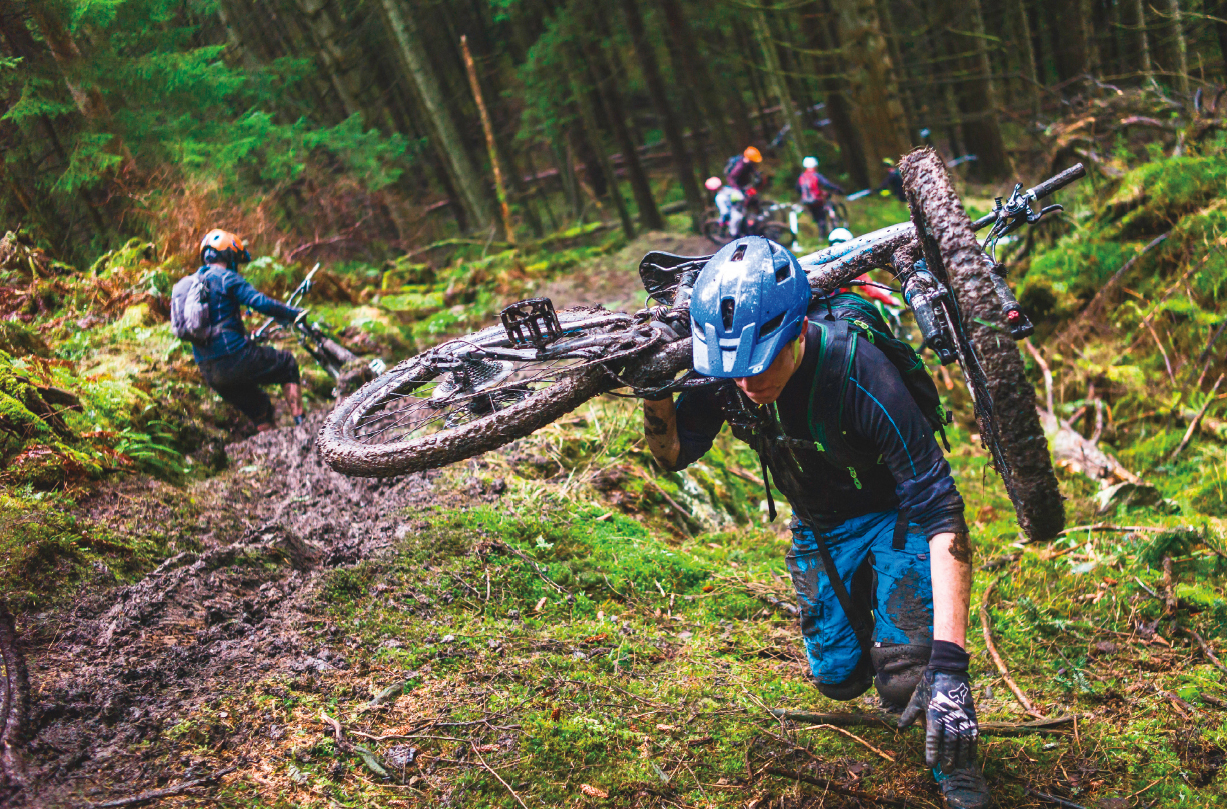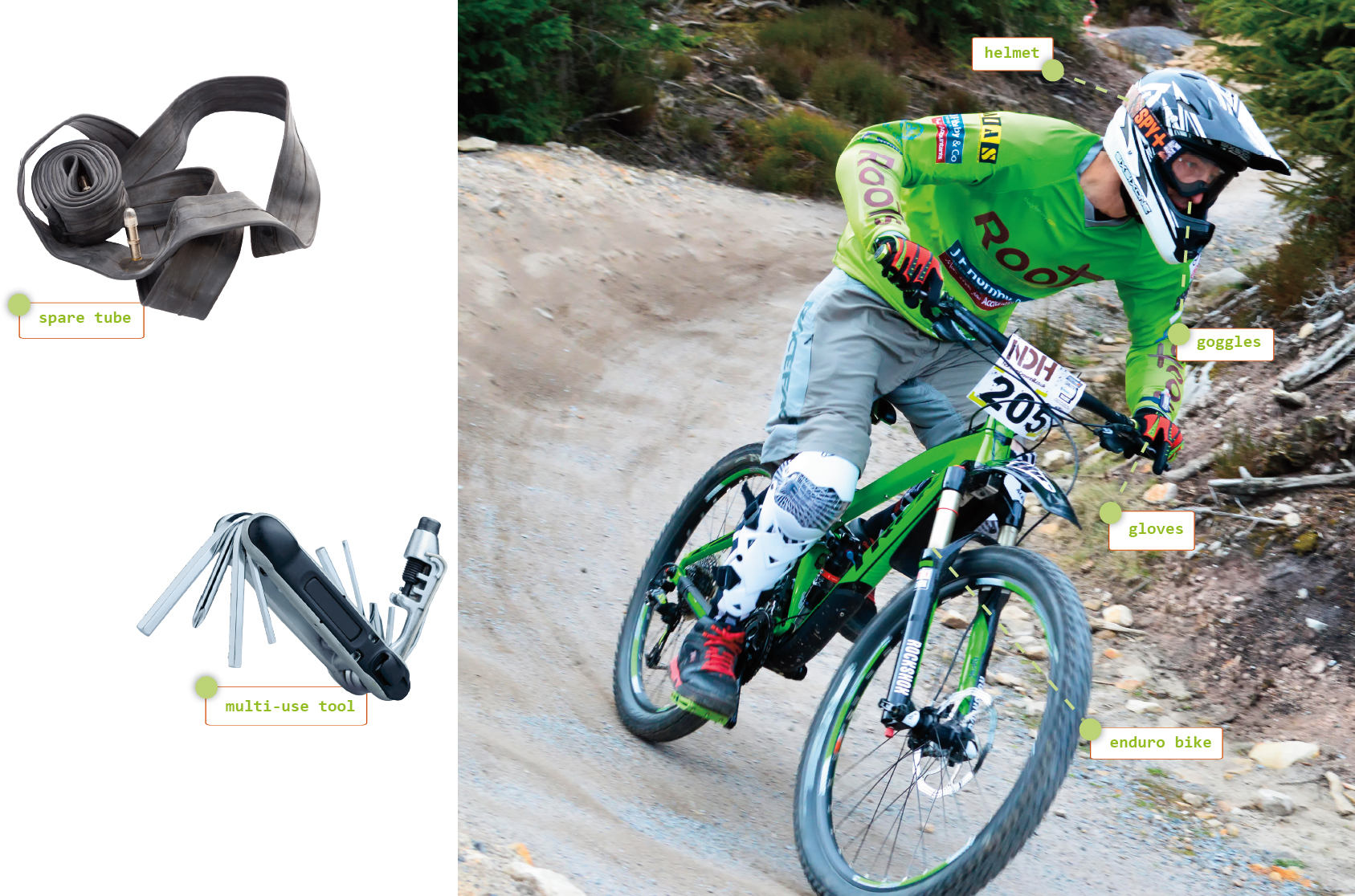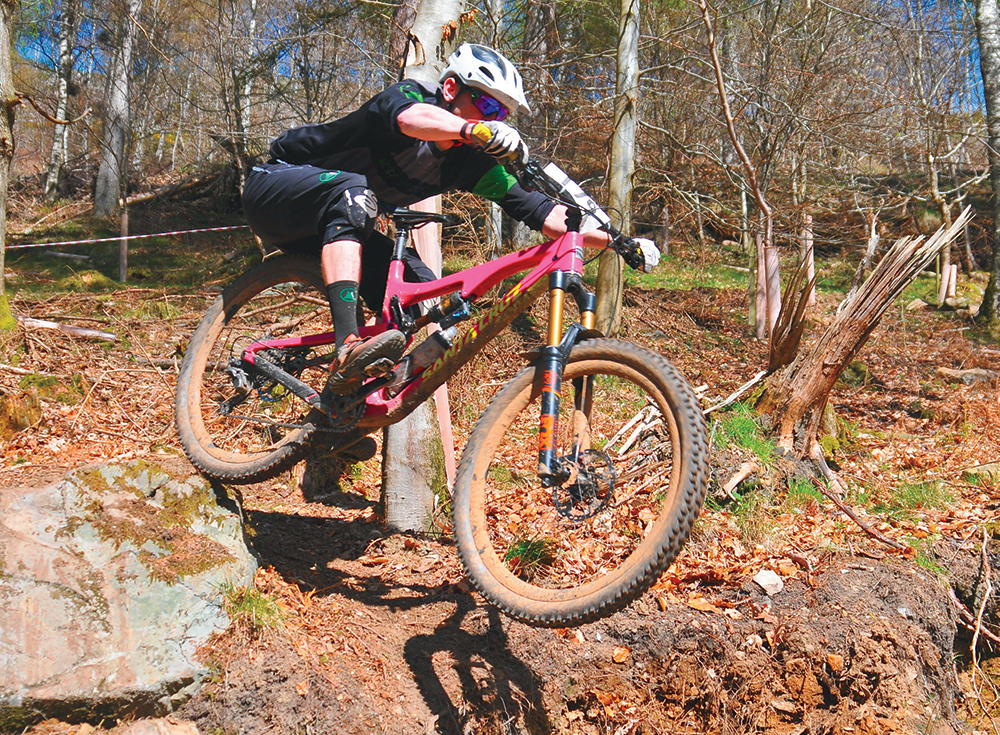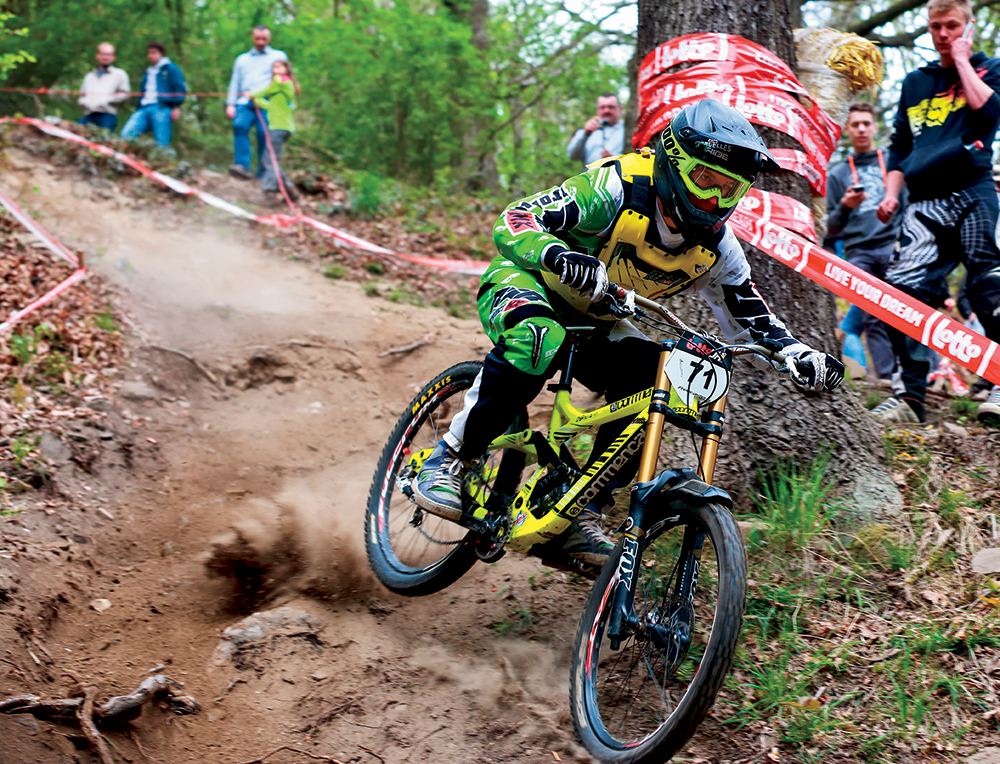READ MORE
- Abdo, Kenny.Mountain Bikes. Off Road Vehicles. Minneapolis, MN: Abdo Zoom, 2017.
- Nagle, Jeanne. Extreme Biking. Sports to the Extreme. New York: Rosen Publishing, 2015.
- Whiting, Jim.Mountain Biking. Odysseys in Extreme Sports. Mankato, MN: Creative Education, 2018.
INTERNET SITES
- International Mountain Biking Association: For Youth
https://www.imba.com/ride/for-youth - Mountain Biking for Kids
https://mtbwithkids.com/ - Red Bull: Mountain Biking
https://www.redbull.com/us-en/tags/mtb
INDEX
- conditions,
courses,
cross country,
CHAPTER 1
Race to the Finish
A rain-soaked Sam Hill stood at the start of the downhill race track in Champry, Switzerland. The course was slick with mud, but Hill wasnt worried. The mountain biker wasnt going to let the conditions stop him from going fast. Even without the rain and hail, the course was one of the steepest, most dangerous courses in World Cup history. But Hill was ready for the challenge. Thirty riders went before him, each carefully taking on the mud-coated course. When Hill took his turn, though, there was no hesitation. His ride down the mountain earned him a third-place finish and the respect of his fellow racers. Hill became legendary in the mountain biking community because he pushed the limits.
Sam Hill races at the 2014 UCI Mountain Bike World Cup in Cairns, Australia
Im loving the enduro stuff, said Hill. Anything you do in life, you set a goal and to achieve it, its pretty special.
That downhill race was just the start for the Australian biker. He switched to enduro racing a few years later and immediately made an impression on the scene. Hill became one of the first riders to successfully use flat bike pedals. Most competitors clip their shoes to the pedals for a tighter grip. But Hill won back-to-back Enduro World Series championships using flat pedals. He has helped the sport reach new heights. His unique style and blinding speed has made him a fan favorite.
CHAPTER 2
What is Enduro?
There are many different styles of mountain biking. Enduro is one thats growing rapidly in popularity. Enduro requires riders to find a way up a mountain and race down to win. Enduro, also sometimes called all-mountain, was inspired by rally car races, and the first competitions were held in the 1990s.
Enduro races are usually made up of three to six timed . Riders have specific times to clear for each stage. Going uphill, athletes either ride or hike with their bikes. Fortunately, the uphill sections of the race are not timed. The times from the downhill sections are then added up to determine the winner.
Oftentimes, enduro athletes must compete a course without any practice runs. This is called blind racing.
You cant use just any bike for enduro racing. Riders need a strong bike with big, stiff wheels to help handle the rough to help with control. Because of these features, athletes can go faster and quickly recover from any mistakes. During races, riders must use the same bike for each run. The racers need a combination of riding skills and excellent fitness to be able to ride up and down the hills. Some races can last nearly an hour.
Enduro races can take place anywhere, but the courses are usually in areas with mountains or hills. This means steep inclines!
The best racers participate in the exclusive Enduro World Series, which features competitions around the globe. Some races, including Colorados Keystone BME and Californias Kamikaze Bike Games, feature divisions for young riders.
Visual Glossary
spare tube: Having a spare inner tube can keep a rider in the race. Enduro courses can be rough, and a flat tire could happen any time!
multi-use tool: This tool allows riders to adjust handlebars, tighten spokes, and even fix the chain if it breaks.
enduro bike: An enduro bike has extra suspension. This means the rider will experience less impact on rough trails and terrain.
gloves: Gloves protect an athletes hands. They also keep hands warm and help the rider grip handlebars.
goggles: Goggles protect a riders eyes from wind, dirt, water, and mud.
helmet: Some enduro riders bring two helmets for one race: one with a full-face mask and one without. A full-face mask gives a rider extra protection.
CHAPTER 3
Downhill
Speed is the name of the game in downhill racing. The only goal is to get to the bottom of the mountain as fast as possible, but it isnt that easy. One small mistake during a run can cost valuable seconds.
Learning the course is key for downhill athletes. They make multiple runs down the course. Each time they make adjustments to get down the hill faster. They are looking for the perfect path to victory.
The path to victory can be full of sharp turns, big drops, and rough landings!
Downhill runs last anywhere from three to five minutes. Courses are set up with a strip of tape on each side. Riders must remain within the tape identifying the course. Racers often must choose what they want to use to get down the fastest. There may be a small jump with a safe landing that covers less ground. Another path may present a huge jump with a difficult landing. Or there may be a jump-free path that could take longer to race. Make the right choice and a rider could be headed for victory.
Downhill riders stay low to help increase their speed.
Downhill bikes are specially designed to ride in one directiondown. Their low center of gravity helps increase speed. Because these bikes are low, they remain and are easier to handle on rough courses. They also have large, spiked tires that can ride over rough terrain without going flat. Many pros change tires and parts after practice runs to make their bikes faster.
Downhill racing got started in the 1970s. A group of friends began racing down a dirt in California named Repack. Before long, more bikers started arriving at the races, and the event became a success. Now, downhill racing is popular around the world. Some ski areas are turned into downhill bike courses during summer months. The Downhill World Cup is the biggest event on the bike racing calendar every year.

